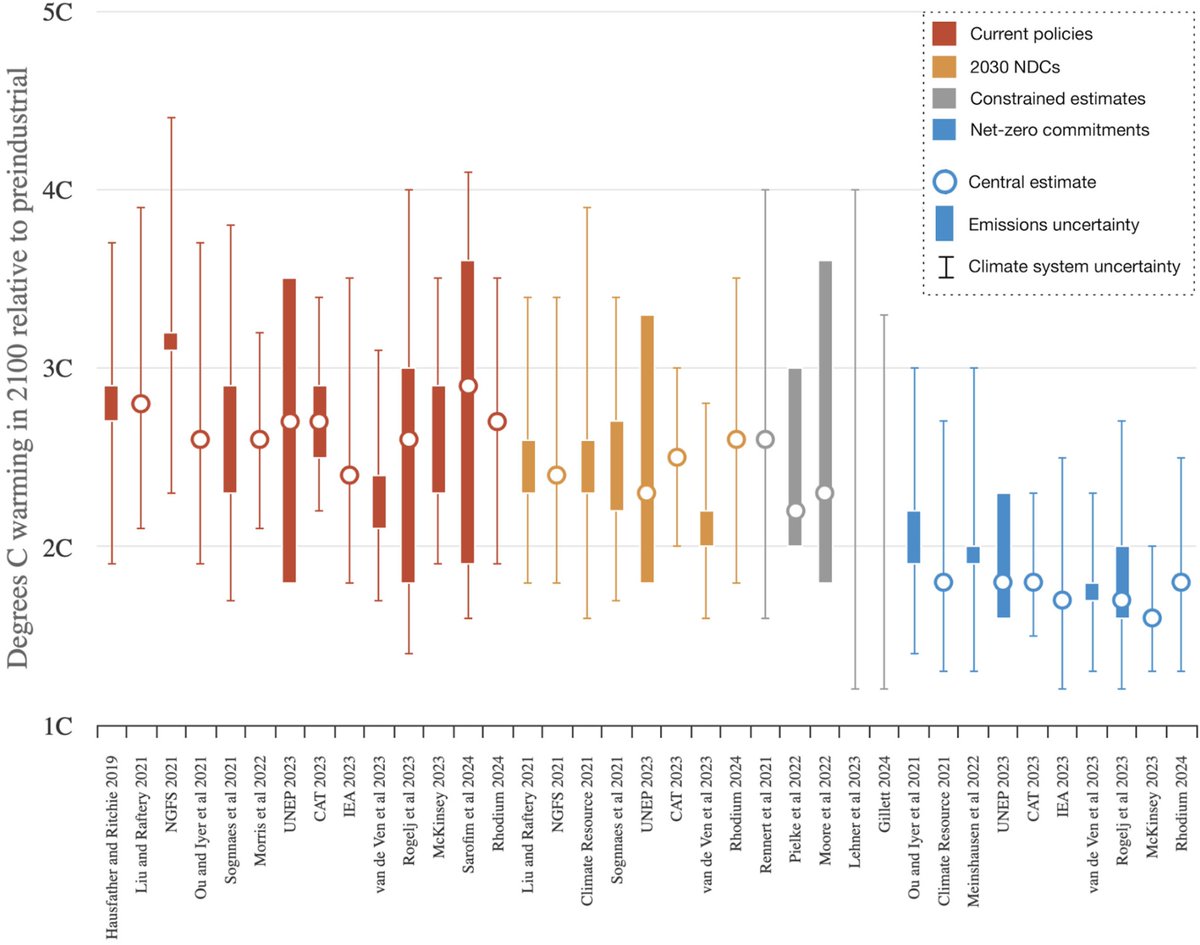Neat accessible primer on climate feedbacks from @AmyAHarder in @axios this morning: axios.com/climate-change…
A few technical caveats:
• I was not suggesting that increased air conditioning load is unimportant, just that its small relative to the big physical climate feedbacks like water vapor and ice albedo.
• I was not suggesting that increased air conditioning load is unimportant, just that its small relative to the big physical climate feedbacks like water vapor and ice albedo.
• Permafrost emissions are not a major player in arctic amplification per se (though changing albedo from surface melt is), as any methane or CO2 from permafrost ends up being quickly well-mixed through the atmosphere.
Here are the major physical climate feedbacks, as well as the spread of uncertainty in each across our models. Values above zero are positive feedbacks, while those below zero are negative: 

Overall, climate feedbacks amplify an expected ~1C warming per doubling CO2 into ~3C warming, with the water vapor feedback playing the largest role.
• • •
Missing some Tweet in this thread? You can try to
force a refresh




















